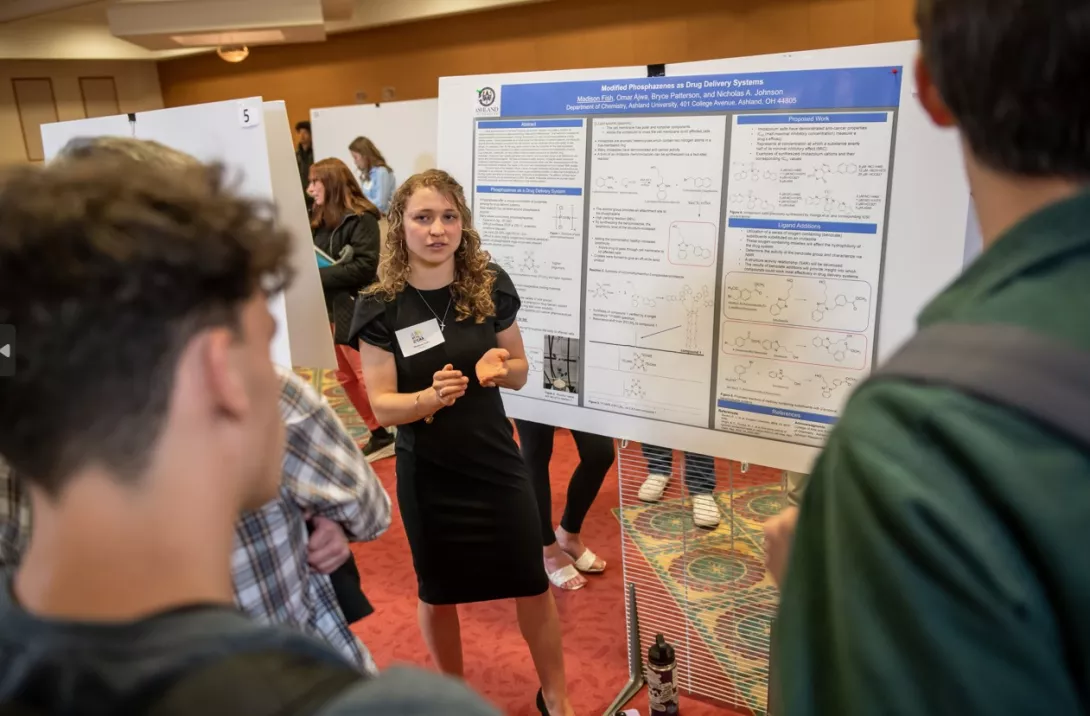
Students, alumni showcase their varied interests and scholarly work during URCA Symposium
Tiffany Sims enjoyed combining three of her interests into one presentation.
Jacob Owens liked sharing about a business he hopes to start.
And Phillip Wages loved giving back to his alma mater.
Those were just a few of the many reasons about 40 students and a couple of alumni from Ashland University’s College of Arts and Sciences presented their scholarly work at the 14th annual Undergraduate Research and Creative Activity (URCA) Symposium on Tuesday, April 18.
Presenters spoke about and exhibited posters/booths on a wide variety of topics – everything from a computer program assisting visually- and hearing-impaired individuals, to a study determining if involvement in AU religious activities predict depression levels, to several creative writing projects – in the Trustees and Alumni Rooms of the John C. Myers Convocation Center.
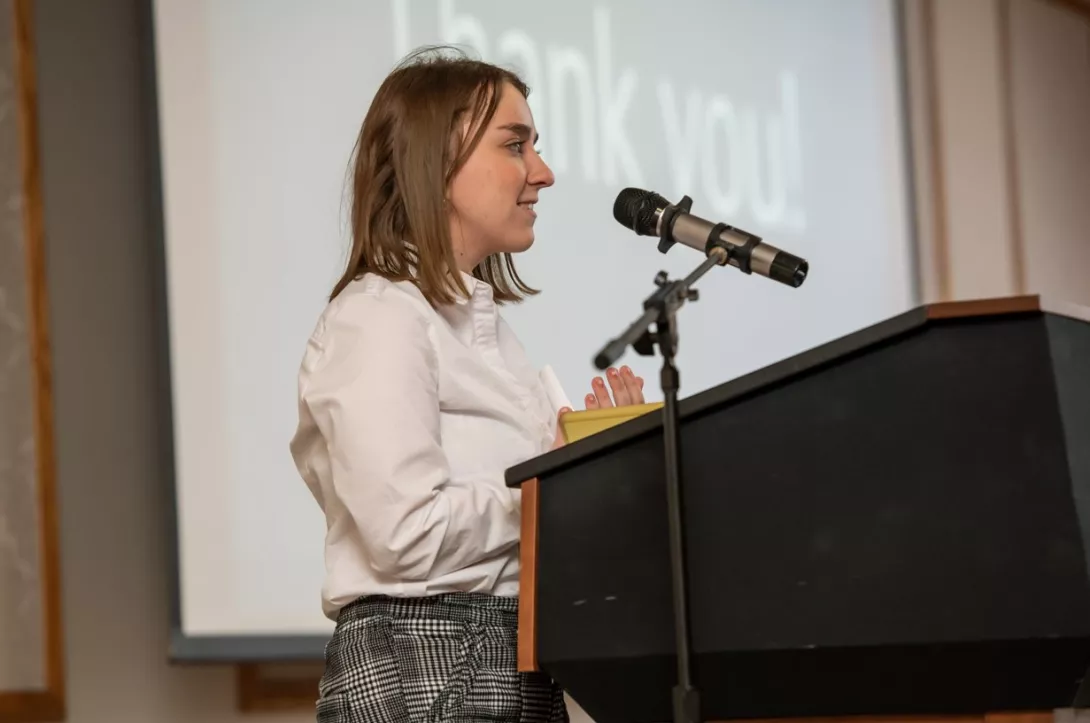
“The URCA Symposium is a celebration among students and faculty who share a mutual joy of learning,” said Katherine Brown, dean of the College of Arts and Sciences, in a news release before the all-day event, which was open to the public and directed by Christopher Swanson, chair of the mathematics and computer science department.
It’s also a celebration for alumni like Wages, a 2011 AU graduate who shared some of his work in product safety and toxicology for cosmetics company Estee Lauder.
“I enjoyed my experience at Ashland doing research here,” said Wages, who also presented at URCA when he was an undergrad at AU. “So, giving back to Ashland was great.
“Another reason I presented was to show what toxicology is doing at a very broad level and give some thoughts to undergrads here if it’s a career path they want to pursue,” added Wages, who works remotely in the Cincinnati area. “There are multiple paths they can take in toxicology.”
Wages also wanted to share some of his latest research with his talk titled, “New Approach Methods: The Next Evolution in Safety Research.”
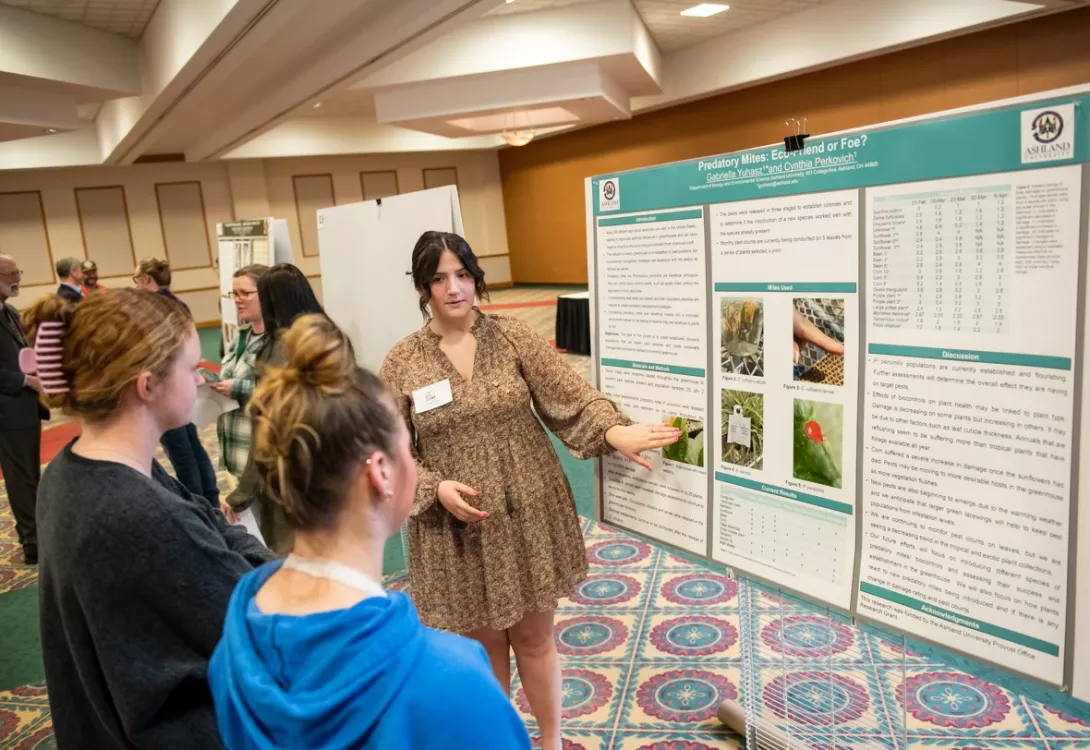
Gabriella Yuhasz, a senior biology and environmental science major, participated in URCA to share her research in the university’s greenhouse with pests and using predatory mites to try to control them.
“I wanted to get out the idea that the university greenhouse has a pest problem and we’re working on ways to reduce it without using things that can harm the environment,” said Yuhasz, who discussed her research with the help of a poster she created for it. “There’s been a decent decrease.”
Because she wants to get a job doing field research, Yuhasz said URCA helped her gain experience for that.
Sarah Fisher, a senior psychology major, took part in URCA for a second straight year to improve her public speaking and to help her career goal of becoming a children’s therapist or psychology professor. She spoke about “Birth Order, Family Size, and Anxiety in Adolescents.”
“It looks good on a CV (curriculum vitae – a professional document highlighting one’s education, experience and accomplishments),” said Fisher, who wants to take graduate-level courses. “I did (URCA) last year, and I really loved it. It is really rewarding.”
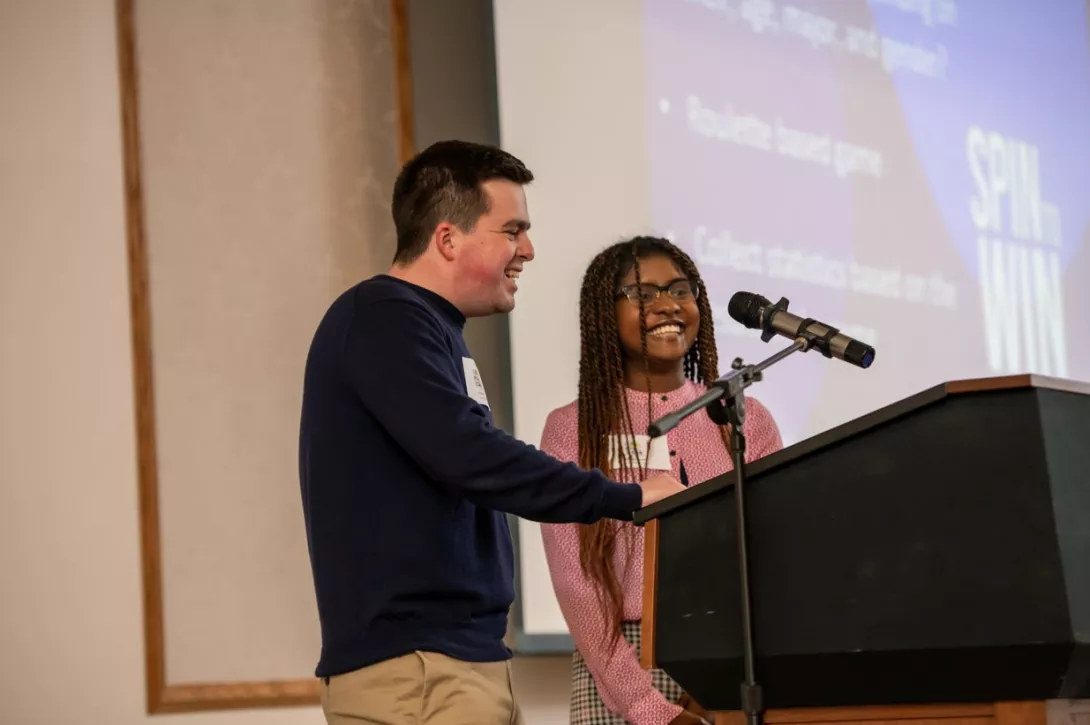
While she has done some presentations in a communications class, Sadae Smith said presenting to a bigger audience at URCA not only looks good on her resume, but will help her as she does future research.
Smith, a sophomore computer science major, presented with junior computer science major Jacob Levering about a semester-long assignment they did in their web programming class called “Spin to Win – A Statistical Approach to Roulette Wheels.”
Because it was something he has wanted to do since he got into AU’s computer science program, Levering said it was a fun website to create. It also taught him how to persevere through obstacles.
“It definitely opened our eyes to how big the scope of web development is,” Levering said. “We reworked it in three different coding languages.”
For another computer science student, senior Jacob Owens, URCA allowed him time to research one part of a business he wants to start combining his love of computers and music.
In his presentation, “Geo-Located Music,” Owens described how he is developing a computerized algorithm that creates personalized music playlists for people on a road trip.
“People travel a lot and people listen to a lot of music,” he said.
Owens wasn’t the only student to combine interests for URCA.
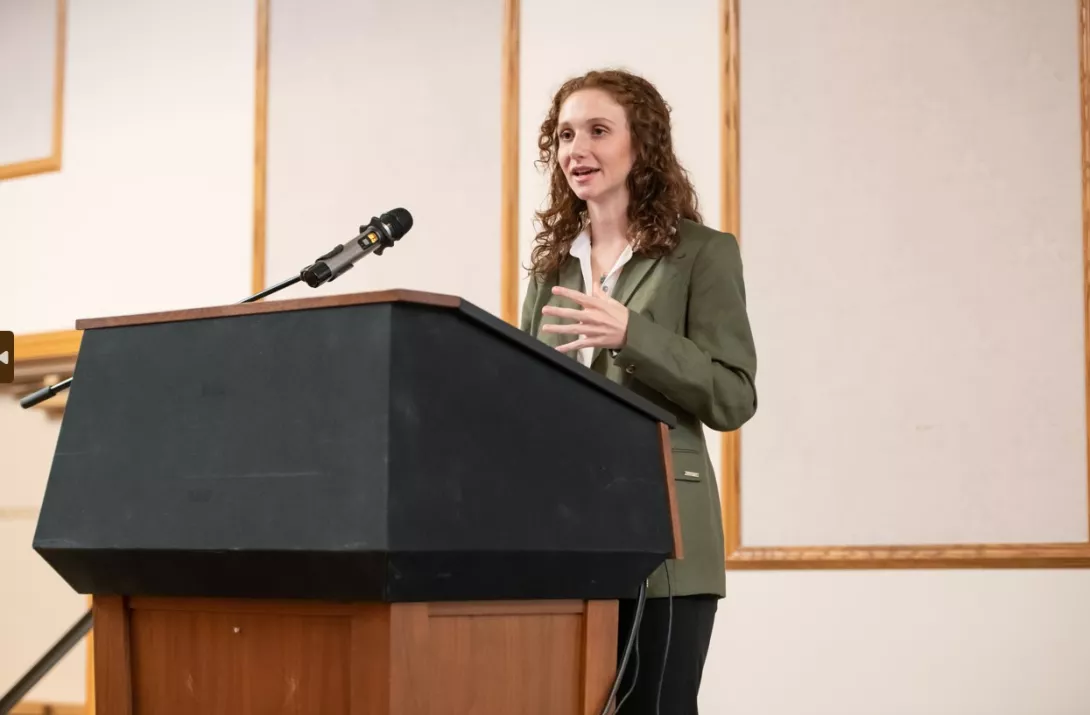
Sims was able to bring her three majors (religion, political science and theatre) together for her presentation, “An Anti-Myth for Immigration: Revelation, Embrace, Love,” that described her creative process for writing a 10-minute play that wrestles with the themes of exclusion, cycles of violence and love and reconciliation. It also combined her senior capstone projects for each of those majors.
Sarah Shearer, a senior graphic design and marketing major, said URCA was a nice way to incorporate her design and marketing sides with her poster project, “Brand Identity and Product Package Design.”
It also allowed her to display her SereniTea products packaging designs beyond the university’s show for senior art projects at Coburn Art Gallery.
“I wanted more people to see what I can do and get myself out there more,” said Shearer, who wasn’t required to have her senior project in URCA.
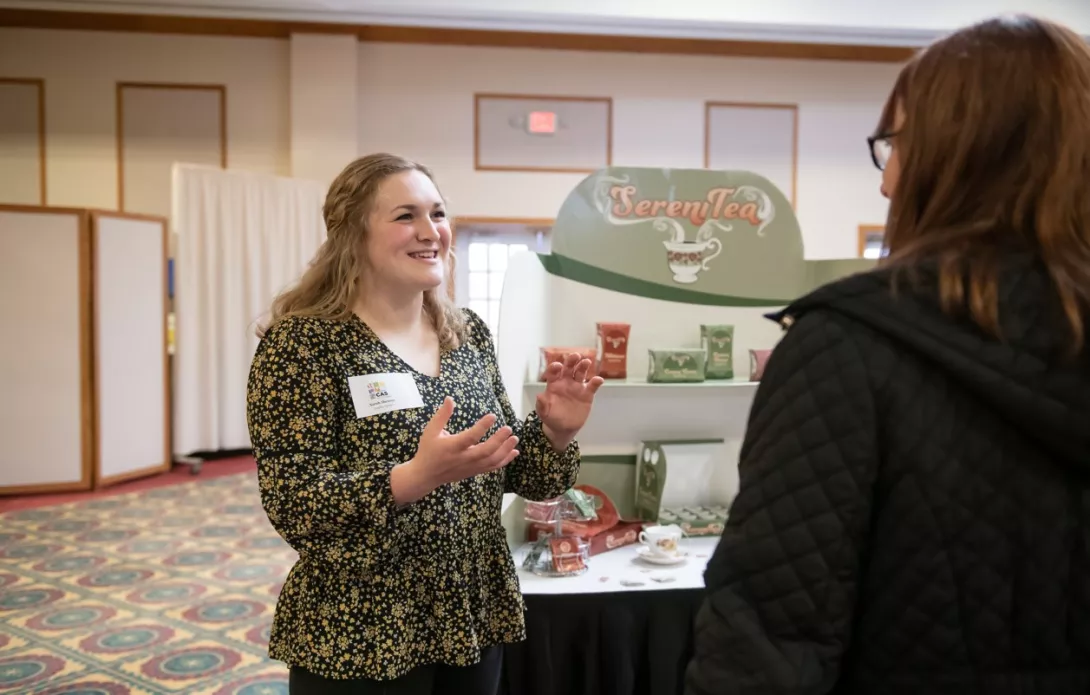
Junior Madison Fish’s project that she worked on with a couple other students, “Modified Phosphazenes as Drug Delivery Systems,” combined her biology major and chemistry minor, which was the main reason she took part in URCA in the poster/exhibition session – but they weren’t the only reasons.
“Research in general helps with critical-thinking skills,” Fish said. “Presenting helps with people skills and learning how to talk in front of people, which can be nerve-wracking.
“I was a little nervous presenting at URCA for the first time,” Fish added, “but I know everyone here is wanting to learn something.”
